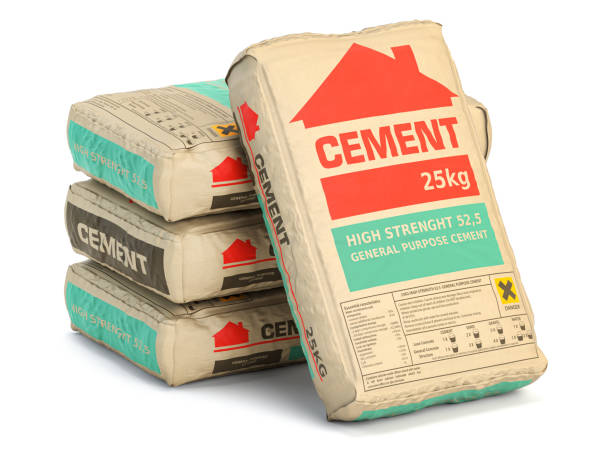Published on: July 17, 2025 at 15:21
Black Cement vs White Cement: Black and white cement, while both used in construction, differ significantly in their composition, appearance, and applications. White cement is primarily chosen for aesthetic purposes and decorative work, while black cement, often created by adding color pigments like carbon black to grey cement, is used for specific visual effects and unique architectural designs.
Cement is an essential building material in the process of construction. The grey cement is the more commonly used cement everywhere, whereas the white cement is used for specific purposes only, or when a certain kind of finish is required.

🧱Black Cement vs White Cement: Composition & Manufacturing
White Cement
-
Made using low-iron limestone and kaolin clay; crucial to maintain brightness, it undergoes bleaching and quenching and is kiln-fired at 1600‑1700 °C for purity and reflectance .
-
Iron oxide content kept below 0.35 %, minimizing yellow or green hues .
Black Cement (Colored or Pigmented Cement)
-
Typically created by adding carbon black or iron-oxide pigments to grey or white cement base.
-
True “black cement” is rare in structural use and mostly used for decorative or flooring applications.
🎨 Appearance & Aesthetic Impact
-
White Cement delivers a bright, clean finish ideal for architectural façades, mosaics, terrazzo flooring, sculptures, and premium interiors
-
Black Cement or black-pigmented concrete offers deep contrast ideal for feature walls or floors—but performance and durability depend on pigment quality.
🛠️ Strength, Durability & Workability
-
Strength: Both white and grey cements offer comparable compressive strength, often Grade 43 or higher; durability is strong when mixed correctly
-
Water Resistance: White cement’s low absorption improves performance in moist conditions, though it’s not waterproof by itself
-
Workability: White cement has fine particle size for smoother finishes, making it ideal for plaster, grout, and decorative overlays.
Also Read: White Cement VS Grey Cement By Birla Cements
💸 Cost Comparison
| Cement Type | Approx. Cost in India (₹ per 50 kg) | Key Use Case |
|---|---|---|
| Grey Cement | ₹350–₹450 | General structural work |
| White Cement | ₹950–₹1,250 | Decorative/exposed use |
White cement costs nearly 3–4 times more than grey cement due to higher-grade inputs and energy-intensive processing .
Watch vid: White cement vs Black cement Youtube
🌡️Black Cement vs White Cement: Thermal & Environmental Benefits
-
Reflectivity: White cement surfaces reflect more sunlight—cooling interiors and helping reduce energy consumption in hot climates
-
Green Building: Regular application of white cement on rooftops or exteriors can contribute to lower heat absorption and better thermal efficiency.
✅ Black Cement vs White Cement: Pros & Cons
White Cement
-
✅ Superior aesthetics and color range
-
✅ Reflective & energy-saving
-
✅ Smooth finish and paint adhesion
-
❌ High cost
-
❌ Whole finishing susceptible to staining
-
❌ Requires skilled application .
Black Cement (Pigmented)
-
✅ Strong visual contrast for design accents
-
❌ Potential color fading over time
-
❌ Lower availability and consistency
-
❌ Color may reduce strength if over-pigmented
🛠️ Black Cement vs White Cement: Best Applications for Each Cement
-
Choose White Cement for:
-
Architectural façades, precast decorative pane ls
-
Terrazzo and mosaic floors
-
Sculptures, outdoor ornaments
-
Colored mortars and wall coatings
-
Mixed pigment concrete for designers
-
-
Choose Black Cement or Pigmented Grey for:
-
Flooring contrast highlights
-
Feature walls or light-duty decor
-
Small-scale garden pathways or paver borders
-
🧠 Black Cement vs White Cement: Expert Tips Before You Choose
-
Budget: Only use white cement where aesthetics matter—don’t overspend on structural elements that will be painted or hidden.
-
Application Skill: Work with experienced masons who understand pigment ratios and contamination risks.
-
Stain Protection: Apply sealants on white cement surfaces to avoid dirt or rust stains.
-
Sourcing: Buy from reputable brands to ensure consistent whiteness (L-value ≥85 %) and strength
-
Climate Suitability: For heat-reflective rooftops, white cement is better than painting—but choose designated roof-grade mixes for durability.
Also Read:
- GTA 6 Pre-Order Arrive: Shocking Price, Ultimate Guide for Pre-Ordering the Most Anticipated Game
- Ultimate BMW 2 Series Convertible: 2025 Highlights, Reviews and Most Thrilling Drop-Top!
- Israel Bombed the Capital of Syria: Targeting the Main Army Chief Headquarters attacked– Full Coverage and Reaction






4 thoughts on “Black Cement vs White Cement: Difference, Uses & Best to Buy in 2025”